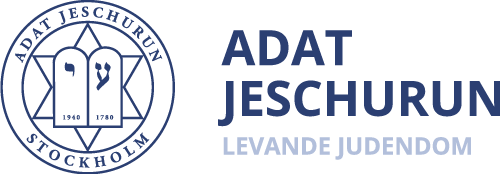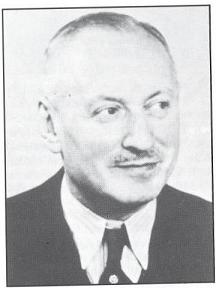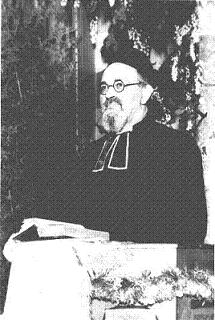THE SALVAGE
If you had taken a walk around the Stockholm port on a chilly spring morning in 1939 you would have seen a pile of boards and boxes, thrown together as if after some sort of demolition. However, this was not a case of waste wood but a testimony to one of the strangest ”export transactions” that ever occurred in Germany during the Nazi era. Looking more closely at the pile you would have seen that these were broken benches and furnishings from a synagogue.
The Chief Rabbi of Hamburg of that time, Dr. Joseph Carlebach, took it as a sign from above with a deeper meaning that this small synagogue had survived Kristallnacht and so he looked for an opportunity to quickly give it a more secure existence. He contacted his dear friend, Mr. Hans Lehmann, a Jew from Hamburg who had earlier moved to Stockholm, and asked if he was ready to take over all the furniture from the Heinrich-Barth-Strasse Synagogue, provided that they succeeded in exporting the inventories from Germany. If so, would Lehmann be prepared to bear the transportation costs? Hans Lehmann, who was a known and active personality in the Jewish community of Stockholm, immediately gave an affirmative answer.
An export licence application for ”old furniture and wood” was submitted to the German authorities. They did not see any obstacles to exporting the ”old junk”. Since they did not understand that this was a transfer of a synagogue interior, the necessary export license was granted and the synagogue furnishings were dismantled and taken to the port of Hamburg together with all items, such as siddurim, talitot, tefillin, etc. that remained in the synagogue.
When the shipment was unloaded at the dock in Stockholm, those present witnessed a frightening sight. What the Nazis had neglected destroying during Kristallnacht the Nazi dock workers truly made up for. They had gone berserk. Benches, cabinets, desks, lamps, books, the bima and the Holy Ark, where the Torah scrolls used to be stored, were shattered and desecrated with swastikas that had been cut into them. Under the supervision of Hans Lehmann, skilled Swedish carpenters and other tradesmen performed a thorough restoration of the furniture. Eventually, after much work, these benches and other fittings regained their original appearance.
The silver items and the Torah scrolls had to be gradually replaced, because it was not possible to get permission to export these things from Germany. New Torah scrolls were slowly acquired, some in the most extraordinary ways. Each scroll has its own remarkable history. One of the current scrolls was secretly transported to Siberia during the World War II and later donated to Jeschurun.
Through the years, we have also obtained Torah scrolls from several of our members. Gerhard Hirsch as well as the families Gartenkraut-Frajnd and Ehrenreich have donated scrolls to our synagogue.
Chief Rabbi Carlebach, who through his resourcefulness saved the synagogue from the Nazis, was deported to a concentration camp outside Riga, where he was murdered in March 1942.


